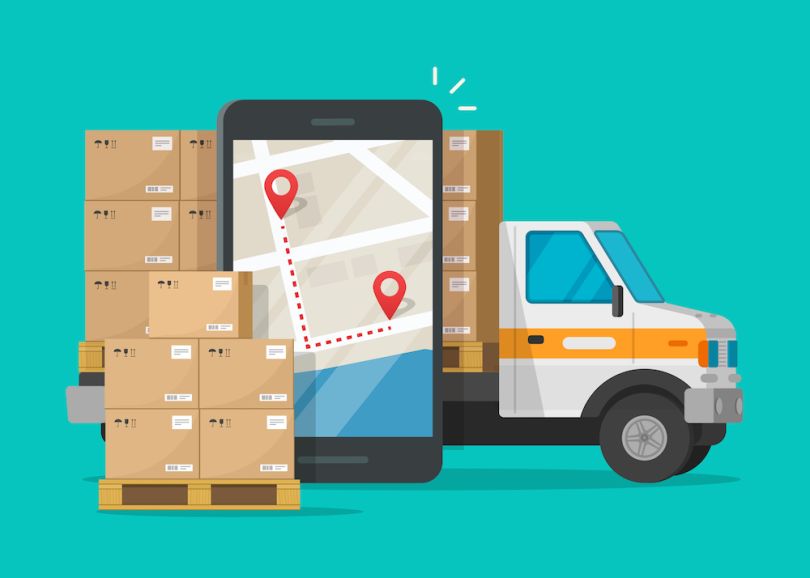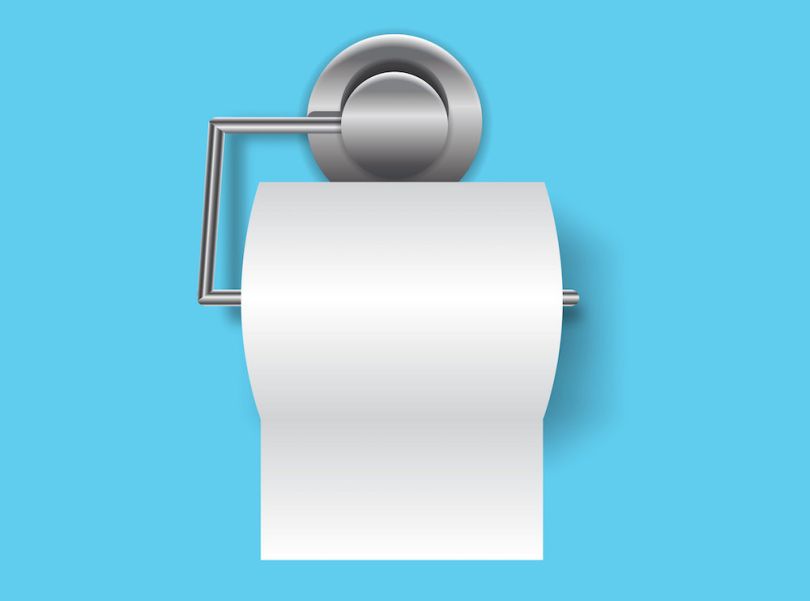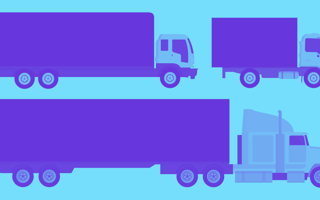To the untrained eye, the second half of March looked like the toilet paper rapture. No one could find a single roll, let alone a 12-pack. Shelves sat empty in bodegas and Costcos alike; even Amazon ran out.
The presumed reason why: Shoppers senselessly panic-bought all the toilet paper, seeking a sense of control during the coronavirus pandemic.
However, during March, a video also surfaced of a Dutch worker driving a cart through a warehouse piled floor-to-ceiling with toilet paper. According to the video’s YouTube title, he “laughs with glee” at the size of the stash.
 This didn’t surprise Glenn Koepke (left), vice president of network enablement at FourKites.
This didn’t surprise Glenn Koepke (left), vice president of network enablement at FourKites.
“Even during the buying frenzy, [toilet paper manufacturers had] inventory on hand,” he told Built In. “They plan for things like this.”
As a bulky, cheap commodity, toilet paper isn’t usually worth long-term storage costs, according to the New York Times. But companies typically have at least a few months’ supply at the ready.
So why the empty shelves? Had supply chains broken down, stranding toilet paper in inaccessible warehouses and factories?
Not exactly.
Global supply chains for coronavirus-related equipment have been disrupted, “discharging their contents like a sputtering garden hose that has now begun to run dry,” as Ed Yong put it in The Atlantic. Doctors around the world lack palliative drugs, N95 masks and more.
Not everything is in equally short supply, though. FourKites, a transportation visibility platform, collects real-time data on freight movement worldwide for a variety of clients, including US Food and Cargill. Overall, the company’s data shows functioning, resilient global and local supply chains for everyday essentials.
Even when the shelves were empty, manufacturers made and shipped toilet paper all over the country.
The issue there wasn’t faltering supply — it was surging demand. Demand for food, drink and consumer packaged goods rose about 25 percent between February 20 and March 20, FourKites data showed.
Though our supply chains are “very agile,” according to Koepke, they couldn’t keep pace with all the changes coronavirus wrought in mid-March 2020. The pandemic inspired panic, but “panic-buying” doesn’t capture the magnitude of what happened. The entire demand landscape changed.

A New Demandscape
Under normal circumstances, individuals and establishments like offices and restaurants both buy toilet paper, each from a different supply chain, Koepke said. People buy from the consumer supply chain, which stocks grocery stores and drug stores. Meanwhile, establishments like coffee shops buy from commercial suppliers, who sell toilet paper in bulk, Koepke explained. Their product is different in terms of construction, quality and price point.
Shelter in place has made consumer toilet paper a hot commodity, but it’s also made commercial toilet paper suppliers almost irrelevant. Their customers have largely been ordered to close. In fact, the Dutch toilet paper warehouse in the video mentioned earlier may belong to a commercial retailer. (The toilet paper looks like it’s packaged in pallets, rather than 12-packs — a key difference between the two types, Will Oremus reported in Marker.)
It’s not just commercial toilet paper makers struggling to sell their product, either. Commercial suppliers, in general, face withering demand.
Take commercial food suppliers: Now that many states have shut down their restaurants, some restaurant suppliers have started running pop-up grocery stores to offload product, Koepke noted. Some restaurants, like Panera, have gotten in on the action too.
Meanwhile, consumer goods manufacturers face a diametrically opposite problem: an onslaught of demand. They continue making and shipping essential goods, from bread to soap, but they’re working at (and sometimes beyond) their maximum capacity.
“We can’t make as much as they want right now,” Jeff Anderson of Precision Paper Converters, a facial tissue manufacturer, told the New York Times.
To cope, some manufacturers have shifted toward simplicity. Instead of making 20 types of bread, Koepke said, some bread manufacturers now make just one type of bread, or “one SKU,” prioritizing efficiency over variety.
“Right now if you’re going to the grocery store, you don’t necessarily care if there’s raisin bread or wheat bread,” Koepke said. “You just want bread.”
Nevertheless, bottlenecks have emerged in our suddenly taxed consumer supply chains. “Dwell time” — the length of time truckers and other freight workers spend waiting for their loads — has increased by about 25 percent across the United States and Europe, FourKites data shows.
Software like FourKites’ doesn’t just document and measure congestion, though. It helps suppliers resolve it.
How Software Shores Up Supply Chains
Real-time visibility software functions like “a single pane of glass,” Koepke says. In other words, it lets clients track activity on their entire supply chains, from raw material shipments to Jewel drop-offs, in one place. Without it, figuring out why a shipment was late “becomes this telephone game,” Koepke said.
Software makes it easier to pinpoint causes of congestion, such as staffing issues, product issues and facility issues. Some of these are easier to resolve than others — hiring more people, for instance, is easier than adding square footage to a factory.
A Gartner report on real-time transportation visibility platforms called products offered by companies like FourKites, project44 and FreightVerify a “key priority” for shippers and third-party logistics companies, and forecasted that, by 2023, more than 50 percent of enterprises will use real-time transportation visibility software.
By straining supply chains, the pandemic has increased interest in the technology. FourKites’ monthly web traffic hit an all time high in March, and, among current clients, it’s also seen a spike in daily active users.
Not only does it clarify supply chain activity, the platform enables fixes. FourKites’ platform, for instance, allows for appointment-based pick-up and delivery, and predicts shipment ETAs. Meanwhile, its machine-learning-powered recommendation engine, one of the platform’s most popular features, flags shipments that could cause major bottlenecks and deserve special care.
“In a crisis, you have less resource bandwidth to white-glove certain things,” Koepke explained. “You’re trying to find the needle in the haystack, and technology is a great way to do that quickly.”
In fact, Koepke sees the supply chain congestion we’ve seen so far dissipating, thanks to a mix of technology, flagging demand and intrepid workers.
“The real heroes right now are not celebrities and professional athletes, right?” he said. “It’s the nurses, the doctors, the truck drivers, the forklift drivers.

The Paper Goods Forecast
By early April, FourKites data showed that shipping volume had already subsided. Though “extremely high compared to normal,” Koepke said, it’s lower than it was at the end of March.
Perhaps relatedly, toilet paper has started reappearing on shelves and online. (Disinfectant and hand sanitizer remain hard to find.)
It may not be the brands we’re used to, and some of it may be repurposed commercial toilet paper. But that, like the shortages themselves, Koepke sees as a short-term phenomenon.
“The commercial toilet paper suppliers will continue to support the commercial businesses,” he predicted. “Their business models aren’t set up for [selling directly to consumers] and ... it’d be a huge infrastructure shift for them to try and change that.”
It’s still an open question how coronavirus will shift our politics, culture and life as we know it — but, apparently, it’s very hard to shake up the toilet paper industry.




